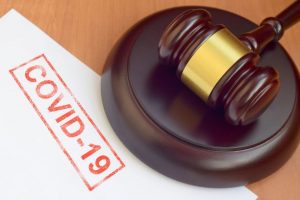Implications Of A Defendant’s Bankruptcy On A Personal Injury Judgment

Victims of serious accidents can be incapacitated at hospitals for weeks or even months. Even with medical insurance, hospital bills, prescription medications, surgeries, and rehabilitation costs can quickly add up. This often makes life extraordinarily burdensome for victims. Unfortunately, winning a large personal injury verdict does not always guarantee that a victim will collect a payout from the liable party. In some cases, a defendant may lack adequate financial resources to pay the judgment and file for protection under bankruptcy.
What Happens If The Defendant Files For Bankruptcy?
Defendants, such as municipalities and large corporations, tend to have deep enough pockets to satisfy large judgments and settlements. However, some defendants who cannot afford to pay millions of dollars may decide to file for bankruptcy. While most personal injury lawsuits are tried under state law, bankruptcy is a federal matter.
 Buffalo Personal Injury Lawyer News
Buffalo Personal Injury Lawyer News












 As the number of claims filed continues to multiply, the Judicial Panel on Multidistrict Litigation has ordered all paraquat lawsuits to be consolidated. The paraquat multidistrict litigation, MDL No. 3004, will be administered by the Honorable Nancy J. Rosenstengel at the United States District Court for the Southern District of Illinois. The Judicial Panel on Multidistrict Litigation’s decision indicates that paraquat lawsuits are rapidly building momentum and could soon develop into a mass tort.
As the number of claims filed continues to multiply, the Judicial Panel on Multidistrict Litigation has ordered all paraquat lawsuits to be consolidated. The paraquat multidistrict litigation, MDL No. 3004, will be administered by the Honorable Nancy J. Rosenstengel at the United States District Court for the Southern District of Illinois. The Judicial Panel on Multidistrict Litigation’s decision indicates that paraquat lawsuits are rapidly building momentum and could soon develop into a mass tort. After being halted due to the COVID-19 pandemic, civil jury trials resumed throughout the state on March 22, 2021. For over fifteen months, courts were forced to drastically minimize their operations and transform legal proceedings into video-linked virtual conferences. All 16,000 members of New York State’s Judiciary have returned to their respective courthouses and other judicial facilities. However, courtrooms were forced to adopt a much different look than before COVID.
After being halted due to the COVID-19 pandemic, civil jury trials resumed throughout the state on March 22, 2021. For over fifteen months, courts were forced to drastically minimize their operations and transform legal proceedings into video-linked virtual conferences. All 16,000 members of New York State’s Judiciary have returned to their respective courthouses and other judicial facilities. However, courtrooms were forced to adopt a much different look than before COVID.





